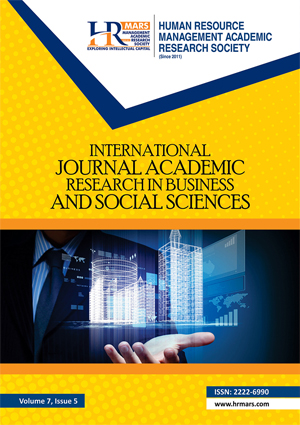
ISSN: 2222-6990
Open access
Researchers have stressed the need of creative problem solving in students at different levels for today’s rapidly changing world. Malaysia Higher Education Blueprint has emphasized that one of the higher education system outcomes on student aspiration is to thinking skills. Graduates who lacked creative problem solving are facing challenges such as difficulty in differentiations, solving complex problems, lacking innovative thinking a work. The purpose of this study was to determine the effectiveness of teaching and learning using Synectics model in identifying problems on user need in the initial stage of Industrial design process. ID-Sync model, where Synectics model integrated into Industrial design process was applied in the experiment. Mixed method sequential explanatory research was employed with 26 participants in one of the universities in Johor Bahru. Students who perceived ID-Sync model teaching and learning have a better understanding in identifying problems in the initial stage of Industrial design process. Results show that participants in experimental group who perceived higher scored in the initial stage, scored higher marks in the following processes as well as the total scores. Although the findings were unconvincing in the effectiveness of Synectics model in the application of teaching and learning in Industrial design process. However, the interview reflected that model should be implemented gradually from the beginning of the program.
Amaran, M. A., Abdullah, H., & Eam, L. H. (2020). Encouraging social entrepreneurship development in creative arts school in Malaysia. Opcion, 36, 994-1010.
Creswell, J. W. (2021). A Concise Introduction to Mixed Methods Research. United States: SAGE Publications.
Cross, N. (2021). Engineering design methods: strategies for product design. John Wiley & Sons.
Cross, N. (2024). Design as a discipline. In Designerly Ways of Knowing and Thinking (pp. 109-118). London: Springer London.Joyce, B., Weil, M., & Calhoun, E. (2008). Synectics. In Models and Strategies of Teaching (pp. 133-166). Kuala Lumpur: Pearson.
Kantorovitch, J., Niskanen, I., Zafeiropoulos, A., Liapis, A., Gonzalez, J. M. G., Didaskalou, A., & Motta, E. (2016). Knowledge extraction and annotation tools to support creativity at the initial stage of product design: Requirements and assessment. In Knowledge, Information and Creativity Support Systems (pp. 145-159). Springer, Cham.
Kalantarnia, Z., Shahvarani, A., Behzadi, M. H., Malkhalifeh, M. R., & Mardanbeigi, M. R. (2020). The impact of bybee and synectics models on creativity, creative problem-solving, and students’ performance in geometry. JETT, 11(1), 68-78.
Meyer, M. W., & Norman, D. (2020). Changing design education for the 21st century. She Ji: The Journal of Design, Economics, and Innovation, 6(1), 13-49.
Mian, S. H., Salah, B., Ameen, W., Moiduddin, K., & Alkhalefah, H. (2020). Adapting universities for sustainability education in industry 4.0: Channel of challenges and opportunities. Sustainability, 12(15), 6100.
Milton, A., & Rodgers, P. (2023). Research methods for product design. Hachette UK.
Ministry of Education. (2013). Malaysia Education Blueprint 2013-2025. Kuala Lumpur: Ministry of Education Malaysia.
MQA. (2020). Programmes Standards: Art and Design (2nd Edition). Kuala Lumpur: Malaysian Qualifications Agency.
Nadarajah, J. (2021). Measuring the gap in employability skills among Malaysian graduates. International Journal of Modern Trends in Social Sciences, 4(15), 81-87.
Puccio, G. J., Burnett, C., Acar, S., Yudess, J. A., Holinger, M., & Cabra, J. F. (2020). Creative problem solving in small groups: The effects of creativity training on idea generation, solution creativity, and leadership effectiveness. The Journal of Creative Behavior, 54(2), 453-471.
Salinas-Navarro, D. E., Mejia-Argueta, C., Da Silva-Ovando, A. C., & Garay-Rondero, C. L. (2020, October). Going beyond traditional approaches on industrial engineering education. In 2020 IEEE Frontiers in Education Conference (FIE) (pp. 1-8). IEEE.
Serikbayeva, A., & Beisenbayeva, L. (2020). Synectics as a modern method of solving creative problems. In Paradigm Shifts in 21st Century Teaching and Learning (pp. 145-157). IGI Global.
Setiana, L. N., Nuryatin, A., Supriyanto, T., & Setyaningsih, N. H. (2021). Implementation of the Synectic Model in Learning to Write Creative Short Stories. In International Conference on Science, Education, and Technology (Vol. 7, pp. 993-997).
Tang, T., Vezzani, V., & Eriksson, V. (2020). Developing critical thinking, collective creativity skills and problem solving through playful design jams. Thinking Skills and Creativity, 37, 100696.
Treffinger, D. J., Isaksen, S. G., & Stead-Dorval, K. B. (2023). Creative problem solving: An introduction. Routledge.
Yu, F., & Silva, E.H. (2021). Design for robot assembly: challenges of online education. Procedia CIRP, 100, 482-487.
Lin, O. E., & Chuen, T. W. (2025). Exploring the Effectiveness of Synectics Model on Creative Problem-Solving Skills in Industrial Design Course. International Journal of Academic Research in Business and Social Sciences, 15(2), 1069–1076.
Copyright: © 2025 The Author(s)
Published by HRMARS (www.hrmars.com)
This article is published under the Creative Commons Attribution (CC BY 4.0) license. Anyone may reproduce, distribute, translate and create derivative works of this article (for both commercial and non-commercial purposes), subject to full attribution to the original publication and authors. The full terms of this license may be seen at: http://creativecommons.org/licences/by/4.0/legalcode